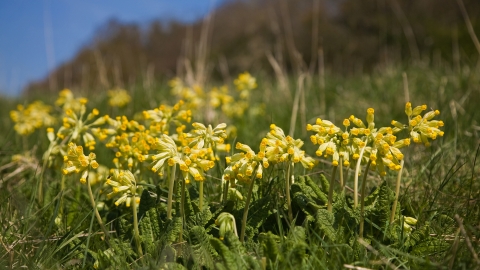
Paul Lane
Lincolnshire Wildlife Trust
Lincolnshire Wildlife Trust
Duke's Covert & Copper Hill
Know before you go
Dogs
Assistance dogs only
When to visit
Opening times
Open at all timesBest time to visit
April to AugustAbout the reserve
Copper Hill road verges have a particularly rich limestone flora with much rock-rose, horseshoe and kidney vetches, spiny restharrow, purple milk-vetch and fairy flax. Butterflies include brimstone and common blue. This was the last known Lincolnshire locality for the chalkhill blue butterfly, and is the most northerly point for man orchid in Britain. Glow-worms may be seen here, and on Duke's Covert.
The adjoining Duke's Covert is old limestone grassland, which accommodates landing lights for the nearby Barkston Heath airfield. The Covert had become overgrown and invaded by bracken and scrub of gorse and hawthorn, but with continued careful removal of scrub, and with mowing and grazing, the interest has being restored.
Many limestone flowers thrive here, including common and greater knapweed, mignonette, burnet-saxifrage, dropwort, field scabious and columbine, a scarce plant in Lincolnshire. In spring there is a colourful display of cowslip, hairy violet and early-purple orchid. As spring rolls into summer the flora includes St John's-wort (both perfoliate and beautiful), rock-rose, horseshoe vetch, dropwort and small patches of purple milk-vetch and lesser meadow-rue. In high summer the scabious and knapweeds attract butterflies in good numbers.
Nearest postcode NG32 3PY. Please note - postcodes are for the nearest registered address as we are unable to get postcodes for nature reserves.
Location information
Duke’s Covert and Copper Hill location

